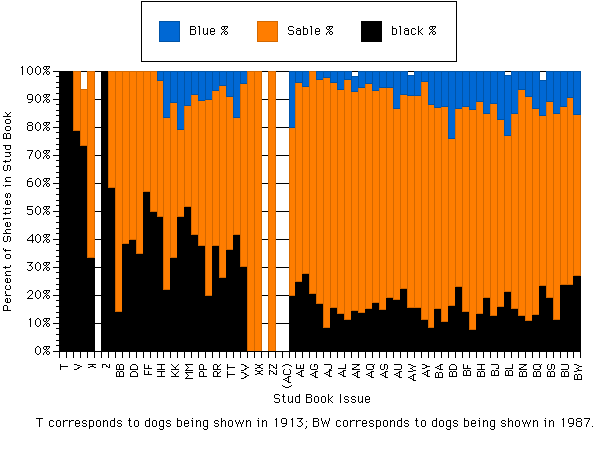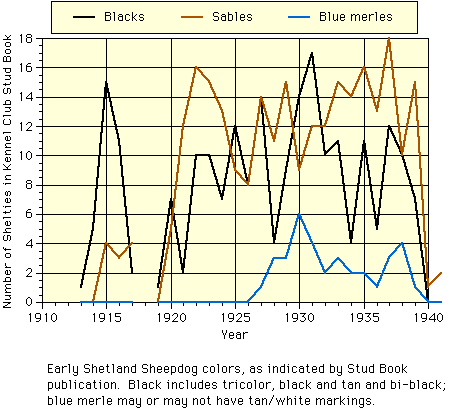Early Shetland Sheepdog Colors
The plot below gives the number of Shetland Sheepdogs registered in the Kennel Club Stud Book, volumes T through ZZ (1913 through 1941) in each of the major color groups. Sable includes sable and sable and white. Black includes black, black and tan, tricolor and black and white. Blue merle includes all blue merles, regardless of whether tan points are present or specified. Note that this chart covers the period when those dogs appearing behind modern stock were imported to the United States.
Many of the early blacks were black and white or black and tan, though those colors were rare by about the late 20's. There were no Shelties published in the Stud Book during the war years of 1918 and in the first years after 1941. However, virtually all of the importations that eventually had a strong influence on the American Sheltie had been made by 1941.
Note the early dominance of blacks, which is reversed by the Wallace (and Teena) descendants fairly early. Although a blue merle (Blue Ray of Houghton Hill) is known to have been a winner somewhat earlier, the first blue merle actually recorded as such in the Stud Book was Kilravock Blue Cloud, whelped in 1926.
The number of registrations jumped after World War II, so I plotted the fraction of total registrations in each color for a longer period (through 1987 at this point.) You may note that two years have less than 100% total. In the first, Peat, a maltese blue, was registered, so black plus sable plus merle made up less than 100% of registrations. The second short bar, for AN, had Tremont Patricia listed without a color given. Note that the number of dogs published from X through Z (World War I) and again from WW to AD was so small that the percentages are unreliable. One Stud Book was published a year, and the AS Stud book covers shows in 1959.

Note that all information is based on dogs appearing in the Kennel Club (UK) Stud Book and thus applies to the winning British Shelties. T corresponds to dogs winning in 1913; BJ is dogs winning in 1975. The gaps represent the two World Wars. Similar charts have also been prepared for US Champion Shelties.
Last update March 8, 2010

